|
|

|
Mark Le Fanu
Vadim Yusov in London
This interview was conducted on the occasion of a celebration organised by Layla Alexander Garrett in London late
last year (2007) to mark the 75th anniversary of the birth of Andrei Tarkovsky, coinciding as it did with the
100th anniversary of that of his father, the poet Arseny.
Mark Le Fanu is a Danish-based writer and film historian who 20 years ago wrote the first ever book-length
study of Tarkovsky in English, The Cinema of Andrei Tarkovsky (BFI Books, 1987).
The essay is reproduced here with the kind permission of the author, who retains the copyright &mdash © 2008 Mark Le Fanu.
All film frames were acquired from the first (1998) Criterion DVD release of the film.
Small images may be clicked for larger versions.
Photo of Vadim Yusov is © 2008 Layla Alexander Garrett.
Among visitors to London for the recent Tarkovsky festival was the veteran Russian cinematographer Vadim Yusov, responsible for the camerawork on Tarkovsky's first four films: The Steamroller and the Violin (1960), Ivan's Childhood (1962), Andrei Roublev (1966) and Solaris (1972). Yusov introduced a screening of Andrei Roublev at the Curzon Mayfair cinema on December 8th and answered questions from the audience afterwards with the aid of an interpreter (he himself doesn't speak English). In appearance he is short and stocky, a fit 78 year old, with watchful and intelligent blue eyes and a thoughtful, courteous way of addressing his questioners: he made an excellent impression. Since he was staying in London for three or four days, I was lucky to be able to encounter him in more leisured circumstances later on during the festival, when he agreed to grant me an informal interview. Ella Vakkasova, a recent graduate of the UK's National Film and Television School, kindly consented to interpret for the occasion.
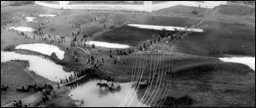 My main purpose was in trying to winkle out some of the secrets behind the film's astonishing visual compositions, particularly its large-scale set pieces such as the raid on Vladimir, or the scenes involving the medieval township viewed across the valley in winter-time, in the extended episode of the forging of the bell. The establishing shots in each of these scenes are fantastically peopled. Far into the distance as well as in the foreground and middle-ground there are milling crowds going about their business, exactly as in some great Dutch or Flemish landscape painting. Somehow, however — it is what is miraculous about the film — these people don't look like "extras": they have the authentic disposition of autonomous subjects, seemingly independent of the will of the director. Of course it is only a trick — as cinema itself is a trick. We know this. But still we are curious: how, exactly, are such scenes brought into being?
My main purpose was in trying to winkle out some of the secrets behind the film's astonishing visual compositions, particularly its large-scale set pieces such as the raid on Vladimir, or the scenes involving the medieval township viewed across the valley in winter-time, in the extended episode of the forging of the bell. The establishing shots in each of these scenes are fantastically peopled. Far into the distance as well as in the foreground and middle-ground there are milling crowds going about their business, exactly as in some great Dutch or Flemish landscape painting. Somehow, however — it is what is miraculous about the film — these people don't look like "extras": they have the authentic disposition of autonomous subjects, seemingly independent of the will of the director. Of course it is only a trick — as cinema itself is a trick. We know this. But still we are curious: how, exactly, are such scenes brought into being?
Yusov's answer encompassed a number of levels. First, there is the machinery of the Russian (strictly-speaking Soviet) film industry itself; right from the beginning it had been geared to large-scale spectacle. The scenes I've just mentioned would have had a maximum of 800 people in them at any given time, says Yusov, but these things are relative: Sergei Bondarchuk's massive revolution epic Ten Days that Shook the World (photographed by Yusov in 1983) apparently had as many as 10,000 costumed extras in the frame simultaneously. All of whom had to be requisitioned, transported, clothed and disposed in front of the camera before being finally "animated". Nowadays, of course, such crowd effects can be achieved by CGI on computer, but forty years ago this aspect of the spectacle, at least, was authentic.
What wasn't real, then, I wondered? Were the locations themselves built from scratch? Apparently not. One might not have imagined this, in view of the Soviet Union's notorious passion for destruction (a murderous civil war in the early 20s, the titanic upheavals of the second world war, plus an official policy of atheism that knocked down many churches in the 1950s) but, scattered over the country's vast terrain, many religious buildings and monuments do survive. For instance, the basilica at the beginning of the film, from which the medieval aeronaut makes his doomed balloon flight, is a real existing church, not a reconstruction. Similarly, the walled village seen from the air surrounded by glistening deserted rivers did not have to be built since it existed already in its own undisturbed time-warp. A number of "towns" in the film, in fact, are actually historical monasteries, the term "monastery" encompassing not only the church itself but the quite spacious out-buildings such establishments possess, as well as the surrounding palisades. The trickery here — if any — lies only in the editor's scissors which allowed the film-makers to composite several of these locations, geographically miles apart, without the audience noticing the difference.
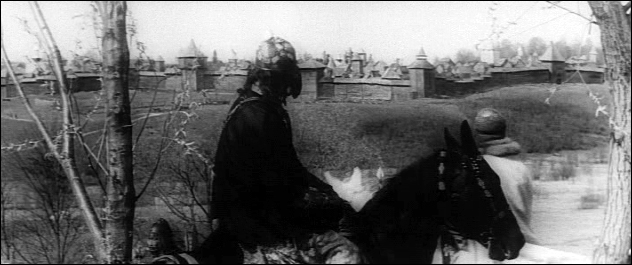
Other scenes are composite in a different way (see above). Look carefully, says Yusov, at the long distance shot of the walls of Vladimir just before the raid by the Grand Duke's treacherous brother and his Tartar allies. The construction seems to be all of a piece. In fact (here Yusov borrowed my notebook and inscribed a rudimentary diagram) only a third of the picture is real wall. The other two thirds (stretching across the right hand section of the screen) is built-to-scale modeling, positioned considerably closer to the camera, but seamlessly joined up in the viewfinder. (Talking of viewfinders, Yusov made an interesting aside at this point which helps explain why, on set, Tarkovsky was reluctant — gratifyingly so, as far as Yusov was concerned — to give specific framing orders to a cameraman whom he trusted. Apart from Tarkovsky's desire to be always as close as possible to the main actors, it turns out that the viewfinder on the anamorphic scope apparatus, like the celluloid itself, squashes the picture, making it difficult to decipher. In short, in those far off days it was a skill in itself to be able to read what the viewfinder was telling you.)
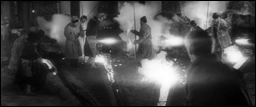
 So there is "trickery" everywhere in films of this sort. In the literal sense it is, of course, all set up and acted: none of Andrei Roublev is real. And yet...there seems to be a core of realism — a core of authenticity — at the heart of Andrei Roublev that one somehow wants to get closer to. The secret, perhaps, lies in the detail; or else in the unique way in which, in this film, the "manufactured" and the "already-existing" are conjoined. Yusov spent some time elucidating the famous bell-casting sequence, first of all in terms of those incredibly complex traveling shots linking the bell, in its subterranean pit, to the surrounding landscape, with the town far in the distance (the kind of shots, he said, about which you were aware while you were making them that this sort of thing had never been done
before, and which for precisely this reason would require unprecedented improvised technical solutions). But Yusov also went into the whole business of the sequence's lifelikeness. The audience has to believe that the bell really is being cast, and that this was the way of doing it at the time. The illusion, for the audience, is all but perfect. Yet what is real, and what isn't, in this episode? Is that genuinely molten metal which streams down the runnels from the roaring night-time furnaces? No, it is not. It is in fact stationary jelly, make to shine like molten metal by a string of lights artfully concealed by the cameraman on either side of each of the four chutes that guide the "metal" down to the bell cast. As the slide covers are drawn off the chutes from below, so the jelly-metal seemingly acquires motion and "heat".
So there is "trickery" everywhere in films of this sort. In the literal sense it is, of course, all set up and acted: none of Andrei Roublev is real. And yet...there seems to be a core of realism — a core of authenticity — at the heart of Andrei Roublev that one somehow wants to get closer to. The secret, perhaps, lies in the detail; or else in the unique way in which, in this film, the "manufactured" and the "already-existing" are conjoined. Yusov spent some time elucidating the famous bell-casting sequence, first of all in terms of those incredibly complex traveling shots linking the bell, in its subterranean pit, to the surrounding landscape, with the town far in the distance (the kind of shots, he said, about which you were aware while you were making them that this sort of thing had never been done
before, and which for precisely this reason would require unprecedented improvised technical solutions). But Yusov also went into the whole business of the sequence's lifelikeness. The audience has to believe that the bell really is being cast, and that this was the way of doing it at the time. The illusion, for the audience, is all but perfect. Yet what is real, and what isn't, in this episode? Is that genuinely molten metal which streams down the runnels from the roaring night-time furnaces? No, it is not. It is in fact stationary jelly, make to shine like molten metal by a string of lights artfully concealed by the cameraman on either side of each of the four chutes that guide the "metal" down to the bell cast. As the slide covers are drawn off the chutes from below, so the jelly-metal seemingly acquires motion and "heat".
And the bell itself, with its beautifully detailed bas-relief of St George slaying the Dragon: surely that is real? No, it is not real either - though the ropes that hoist it (which the camera examines in minute close-up): of course they are real. Yusov reminded me that when Tarkovsky and Konchalovsky wrote the episode of the bell-founding, they themselves had no idea how the technology of medieval bell-casting was ordered. All that had to be discovered in the future — bit by bit, as it were, part of the immense collaboration which goes into film-making, and for which the sequence itself, in all its effort, difficulty and ingenuity , stands as a kind of fascinating metaphor.
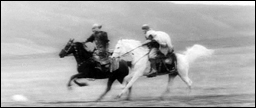
 What else did we talk about? We talked about horses. Yusov said this: The American cinema, through the genre of the Western, is the main filmic way by which we continue to experience the heroic gestus of "man mounted on beast" — with all the speed, excitement, valour and skill which that activity encompasses. And yet filmic horsemanship had, in a way, a second birth, an exotic counterpart, in Japan, under the guidance of Kurosawa — indebted to the American model, of course, yet at the same time independent of it, since shot and edited in the Japanese director's own idiosyncratic way. The action sequences of Andrei Roublev, Yusov was able to confirm, owe everything to movies like Seven Samurai and Throne of Blood: the "Kurosawa dynamic" was, very specifically, what Tarkovsky was aiming for. An immense amount of effort went into finding horses and riders who could carry off the feats they were charged to perform, with the kind of born-to-the-saddle naturalness that one finds in Kurosawa's samurai films. And here was an interesting detail: Tarkovsky and Yusov did their location scouting (not all of it, naturally, but a lot of it) on horseback. Only on horseback, they believed, could they imaginatively penetrate the world they were engaged in constructing. (A serious fall from his mount, a spike from one of whose hooves penetrated a calf-muscle, had Tarkovsky briefly hospitalized during filming. Later, the crutches on which he hobbled back to work were a campaign badge of honour.) As we all know, horses are an element — a crucial element — of Tarkovsky's signature iconography: they are different from us, but he wants us to feel their mysterious nobility. Appropriately, it is on an image of horses grazing in a meadow — after the great concluding colour sequence of the Roublev icons — that the film finally comes to a close.
What else did we talk about? We talked about horses. Yusov said this: The American cinema, through the genre of the Western, is the main filmic way by which we continue to experience the heroic gestus of "man mounted on beast" — with all the speed, excitement, valour and skill which that activity encompasses. And yet filmic horsemanship had, in a way, a second birth, an exotic counterpart, in Japan, under the guidance of Kurosawa — indebted to the American model, of course, yet at the same time independent of it, since shot and edited in the Japanese director's own idiosyncratic way. The action sequences of Andrei Roublev, Yusov was able to confirm, owe everything to movies like Seven Samurai and Throne of Blood: the "Kurosawa dynamic" was, very specifically, what Tarkovsky was aiming for. An immense amount of effort went into finding horses and riders who could carry off the feats they were charged to perform, with the kind of born-to-the-saddle naturalness that one finds in Kurosawa's samurai films. And here was an interesting detail: Tarkovsky and Yusov did their location scouting (not all of it, naturally, but a lot of it) on horseback. Only on horseback, they believed, could they imaginatively penetrate the world they were engaged in constructing. (A serious fall from his mount, a spike from one of whose hooves penetrated a calf-muscle, had Tarkovsky briefly hospitalized during filming. Later, the crutches on which he hobbled back to work were a campaign badge of honour.) As we all know, horses are an element — a crucial element — of Tarkovsky's signature iconography: they are different from us, but he wants us to feel their mysterious nobility. Appropriately, it is on an image of horses grazing in a meadow — after the great concluding colour sequence of the Roublev icons — that the film finally comes to a close.
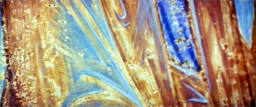
 We talked too about this icon sequence. The beautiful climactic colour episode (with its fabulous soundtrack) provides an interesting example of the complications of auteurship that always arise when contributors to a given film, other than the director, have their legitimate say. At no point in our interview did Yusov speak of Tarkovsky as being anything other than the driving force (or if you like, the creative genius) behind the great masterpiece we were considering. But he was modestly proud of his own contribution at crucial moments, and held out for his contribution to be recognized. The sequence of the icons is in fact very complex: a meditation on painting that is itself a painting — the brushstrokes in question being the movements of the camera that wash over the different images, at first in extreme abstract close-up, only gradually revealing the figurative elements (saints, animals, architecture) that lie at the bottom of Andrei Roublev's sacred and at the same time beautifully human art. During the sequence, each detail singled out was a decision made, just as each editing dissolve had to be thought about, linking this formal element to that. And all of it — down to the very rhythm and pace by which we are conducted through the artist's surviving fragments — was shot and conducted by Yusov alone. No "directing" here by any third party, Yusov assured me: indeed Tarkovsky, on occasion, was not even present.
We talked too about this icon sequence. The beautiful climactic colour episode (with its fabulous soundtrack) provides an interesting example of the complications of auteurship that always arise when contributors to a given film, other than the director, have their legitimate say. At no point in our interview did Yusov speak of Tarkovsky as being anything other than the driving force (or if you like, the creative genius) behind the great masterpiece we were considering. But he was modestly proud of his own contribution at crucial moments, and held out for his contribution to be recognized. The sequence of the icons is in fact very complex: a meditation on painting that is itself a painting — the brushstrokes in question being the movements of the camera that wash over the different images, at first in extreme abstract close-up, only gradually revealing the figurative elements (saints, animals, architecture) that lie at the bottom of Andrei Roublev's sacred and at the same time beautifully human art. During the sequence, each detail singled out was a decision made, just as each editing dissolve had to be thought about, linking this formal element to that. And all of it — down to the very rhythm and pace by which we are conducted through the artist's surviving fragments — was shot and conducted by Yusov alone. No "directing" here by any third party, Yusov assured me: indeed Tarkovsky, on occasion, was not even present.
It was wonderful to see the movie again, in such honoured company. Even in these days of state-of-the-art DVD offerings, films like this have to be seen in the cinema to grasp their full impact: to appreciate, for example, the tiny details in the top left hand or top right hand corner of the screen which give life and authenticity to the action. And as with all masterpieces, each new screening, separated by a reasonable length of time between, brings its individual revelations: here, for instance, for the first time I felt it didn't matter that the scars of Andrei Roublev's long and complicated gestation remain visible to the naked eye as a certain disjointedness, a certain unexplained quality (even obliqueness) in the motivation of each of the film's three main characters. We can make our own connections, I think — and we do. So the charges against the film of "formal incoherence" seemed to vanish in the air as I looked at it afresh. It is a movie edited with authority — as organic as masterpieces have to be. A single compelling vision — yes, let us call it Tarkovsky's vision! — unifies the whole. 
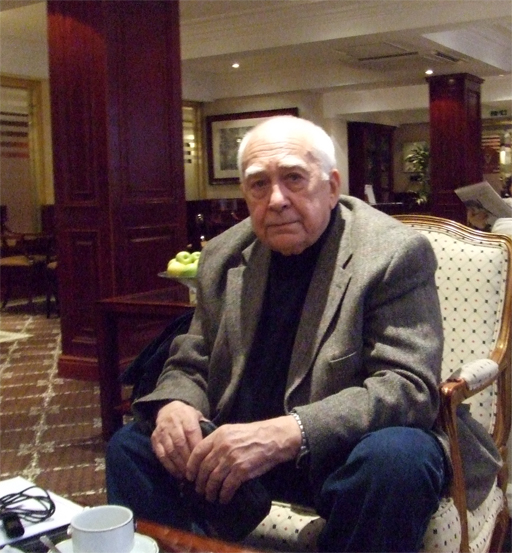
Tarkovsky cinematographer Vadim Yusov in London, 8 December 2007.
|

|
|

